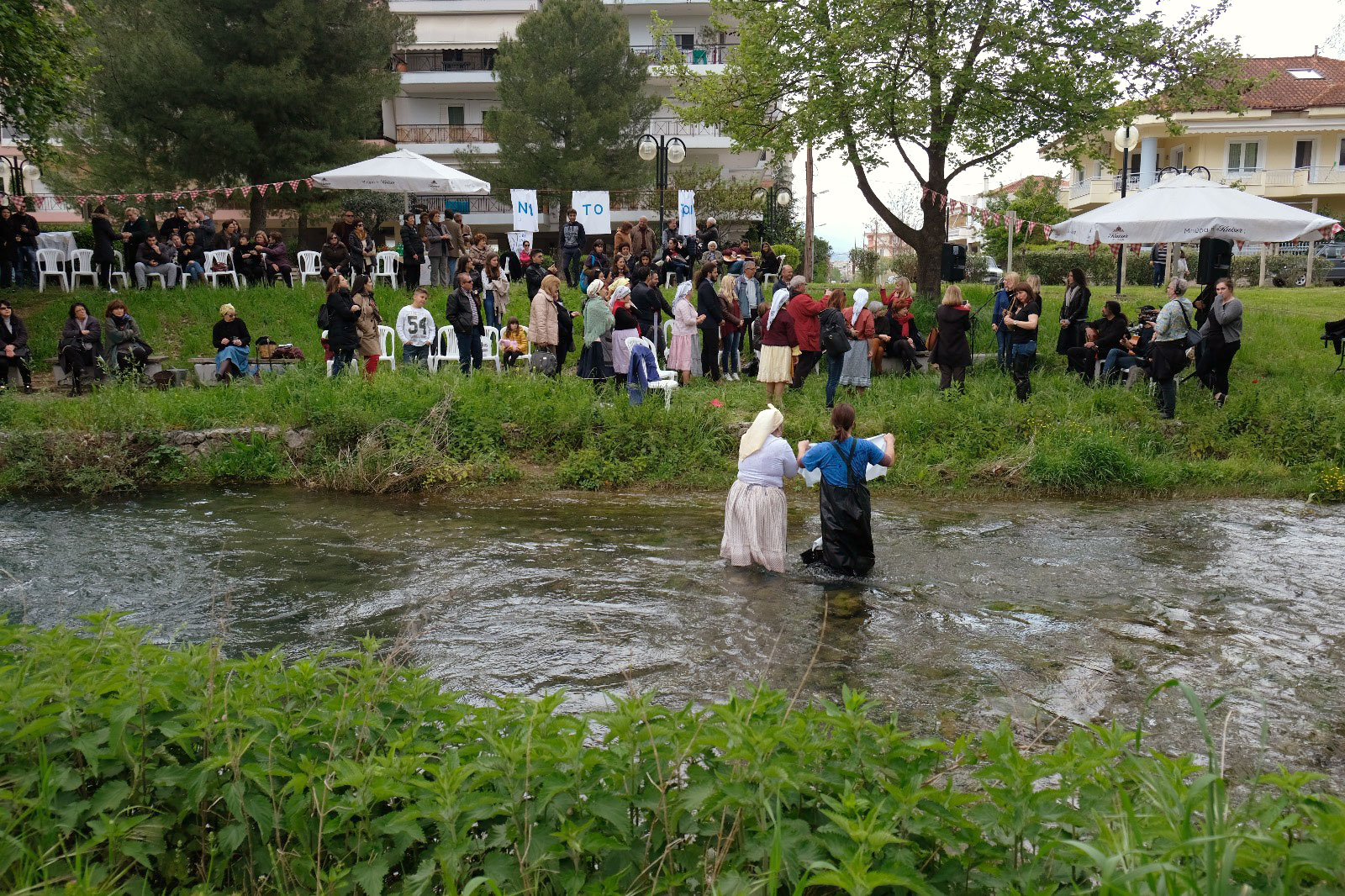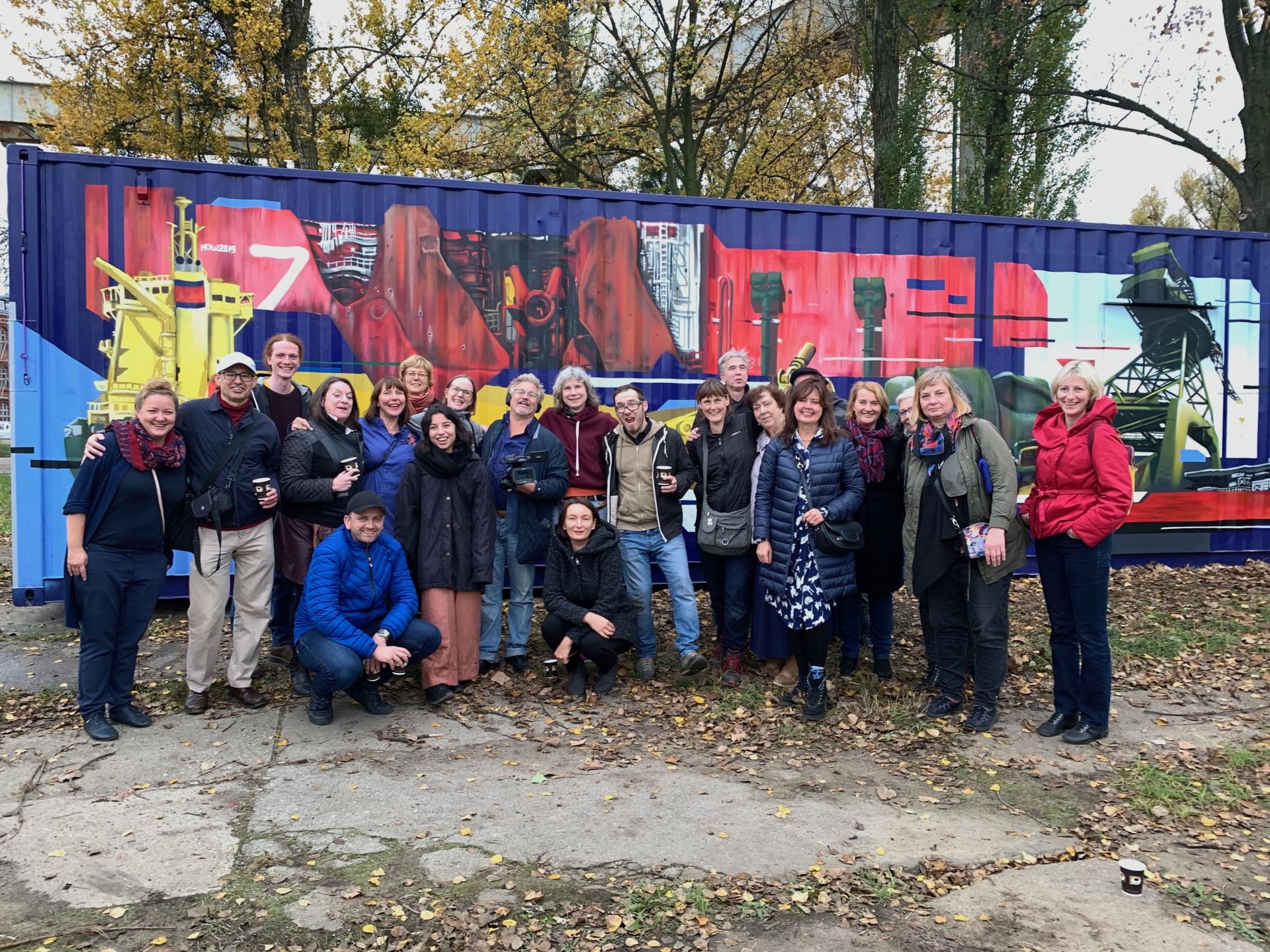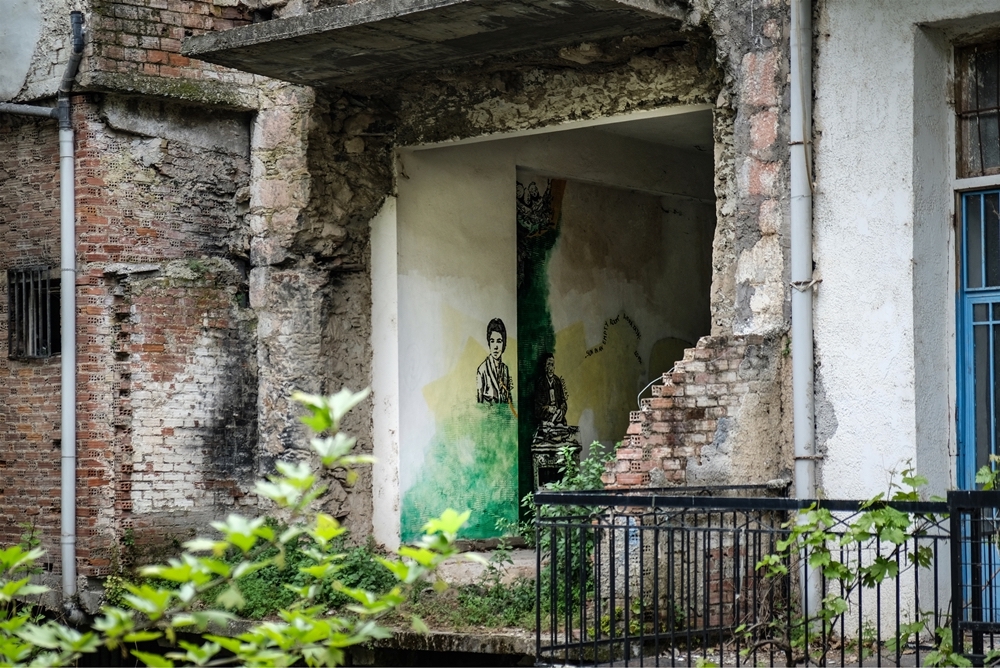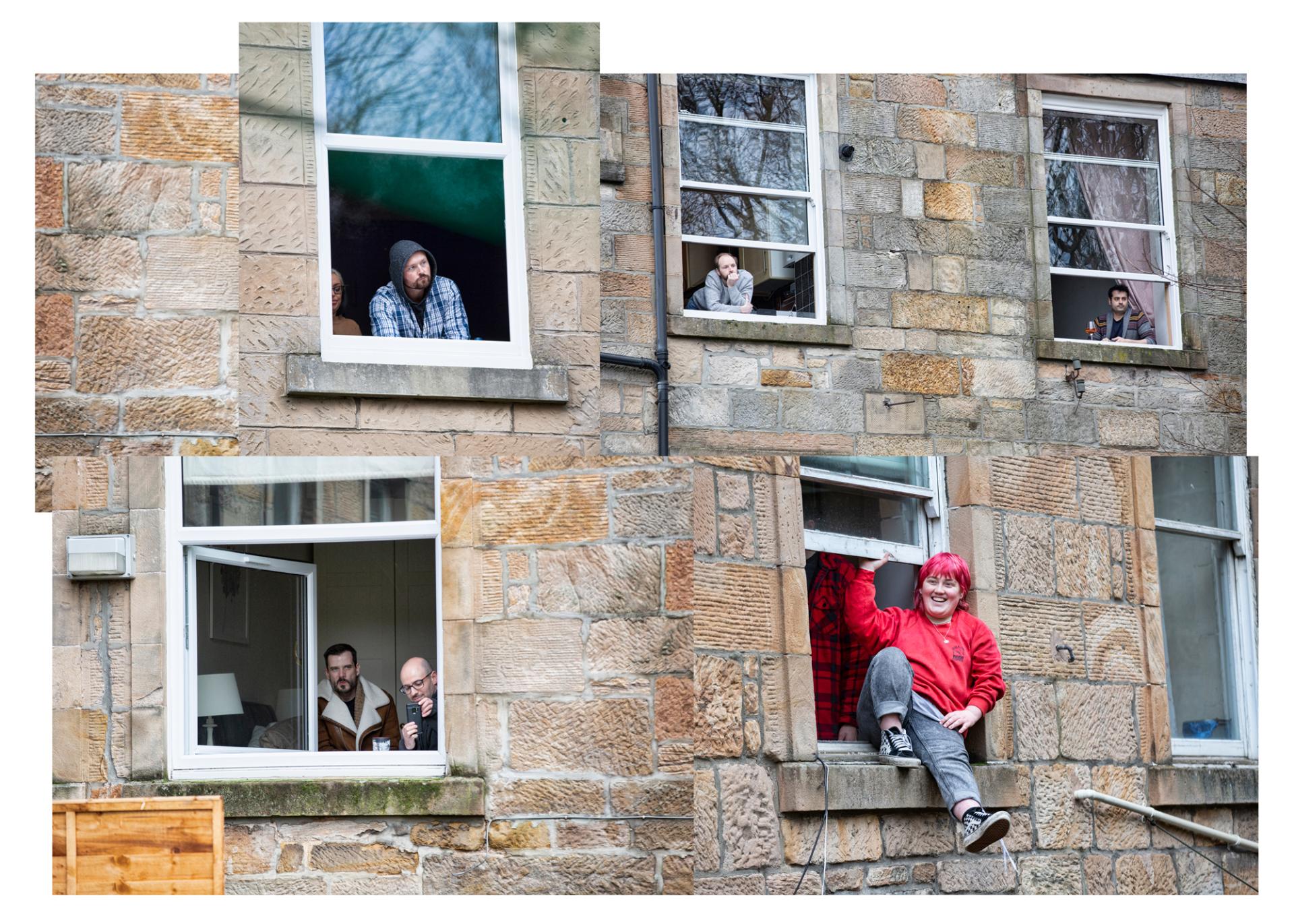Memory of Water
Basic information
Project Title
Full project title
Category
Project Description
Memory of water - a pan-European story of culture, aesthetics, and sustainable green planning for heritage urban futures. A collaboration led by artists: crossing borders; creating connections beyond borders with universal concerns, possibilities and challenges; finding creative answers that span sectors and themes for our cities’ regeneration. Mobilising citizens, activists, community organizations, policy makers, we built solid ground for future cooperation to explore the themes further.
Project Region
EU Programme or fund
Which funds
Other Funds
Creative Europe Culture 2018 small cooperation project 2018-2021
Description of the project
Summary
Communities, supported by artists, uncovered future uses for industrial infrastructure. Activists and mobilised citizens translated answers for our cities’ politicians and planners - influencing decisions around cultural heritage in the market economy and climate-contested cities - building solid ground for future cooperation . From 2018, six european cities: Govan, Gdansk, Levadia, Limerick, Ostend and Stockholm, collaboratively delivered an artist-led exploration of what's next for waterfront industrial heritage in the context of community development and urban planning. Over two years, Intercult, Sweden, Stad Oostende, Belgium, the Municipality of Levadia, Greece, BSCC Poland, Fablevision, Scotland, and Ormston House, Ireland collaborated with artists to deliver twenty-three interconnected activities. Local and international city labs; international residencies; artistic interventions and filmed documentaries demonstrated our processes and practices. The results delivered hugely successful impacts: increasing understanding of the role of artists and aesthetics in urban planning (particularly in the context of defending contested cultural heritage); strengthening and capacity-building of partners, artists, activists, communities and participants; crossing borders and building connections beyond borders with universal challenges. We prioritised and amplified the voices of communities. Cultural operators, policy makers, architects, urban planners listened to local artists, civil society, youth, migrants, refugees, people with disabilities and local residents. Artists shared engaged practices that impact future narratives, intervening in issues like homogenisation, gentrification, sustainability and greening. Together, we created open networking spaces (physical and virtual). Collectively we piloted new ideas for clean, green solutions on post industrial waterfront heritage zones with activists, planners, politicians.
Key objectives for sustainability
Sustainability on artist-led exploration of what's next for waterfront industrial heritage in the context of community development was delivered through dissemination of results from activities: strengthening and capacity building for local NGO's like Ormston House (Ireland), Fablevision (Scotland) and Intercult (Sweden); local communities finding their 'voice' in future planning; cooperation between artists, cultural organisations and local community organisations and on-going shared networking spaces to deliver peer to peer learning/training. Piloting innovative ideas in cultural planning methodology was our tool for ensuring long term impact of artist interventions on post-industrial waterfront heritage. Later, this capacity building extended to Georgia and Ukraine and all partners are collaborating on new transnational projects together. Capacity building for artists built socially engaged arts practice skills within local artist communities - all in the context of urban planning and community development. Transnational mobility (particularly during the pandemic) became not only crossing borders, but connections beyond borders with universal concerns, possibilities and challenges - finding artistic answers and sharing artists' practice in areas like greening (Gdansk produced a green network plan for the city) and clean industrial futures.The involvement of citizens, politicians and planners from each of our cities’ ensured sustainable impact on regeneration plans (in Govan, 750 high rise flats were rejected on the grounds of climate change and flood risk). Artists and partners played important cross sectoral roles in their cities, highlighted the aesthetics of ignored heritage, raised awareness of stakeholders; increased visibility of underrepresented local communities and crucially, supported contemporary activists in their struggles for the future context of heritage sites like Govan Graving Dockc, the former Gdańsk Shipyard area, port area of Stockholm.
Key objectives for aesthetics and quality
Memory of Water developed an international residency programme with an innovative audience development plan to connect artists with local activists, residents, private developers, politicians and urban planners. The three core themes of the programme were (1) access and inclusivity, (2) environmental impacts and responsibilities, and (3) memory and heritage.
These themes were tackled from a perspective of aesthetics: always broadly, obliquely- using symbolism, poetry and humour. During intimately curated activities, artists connected with diverse communities: newcomer citizens from UNHCR’s Refugee Resettlement Programme, and youth advocates for mental health and psycho-social rehabilitation. Artists and communities learned about the industrial histories of each river city from cross disciplinary field experts; cultural and political life through open workshops and seminars.
The residency programme was aesthetics underpinned by city lab debate on community development, planning policy, and the regeneration of waterfront heritage zones in post-industrial cities. Webinars were designed to share knowledge and experiences from cities across Europe. Following in-depth research, the artists co-created artistic actions and interventions with local communities through hands-on, participatory methods.
The aesthetic underpinning has had sustained impacts on the ground, not only in terms of the artists’ careers, but in terms of successfully linking arts and culture with the sustainable future of post-industrial heritage sites. Partners have reported improvements in host cities including a review of regeneration plans for the Govan Dry Docks in Scotland; increased motivation for UNESCO heritage recognition of the former Gdańsk Shipyard in Poland; on-going plans for revaluing the banks of the Erkyna river by the Municipality of Levadia in Greece, waterfornt revitalisation of Limerick Island, Ostend sea front and the Tegelviken port of Stockholm.
Key objectives for inclusion
Artists worked with citizens and community groups to create inclusive events and participatory interventions - provided opportunities for innovative audience development, raised awareness of stakeholders and increased visibility of underrepresented communities.
Local city labs involved diverse communities, local artists, residents and activists working with asylum seekers/refugees and excluded minorities (e.g. travelling show people in Govan). International city labs bridged the digital divide with local activities livestreamed internationally. International residencies allowed local women in Levadia, Greece to share their traditional 'washing of clothes in the river' with a global audience and for all local people to share future visioning for their spaces and places. Accessible film screenings and documentation showing the processes and practices delivered sustainable impacts and outputs: strengthening and capacity building for local NGO's working with diverse populations. Cooperation between artists, cultural organisations, local community organisations and on-going shared networking spaces delivered peer to peer learning/training, sharing socially engaged arts practices and processes. Later, this inclusion extended to marginalised communities in Georgia and Ukraine, with all partners collaborating on new, inclusive, transnational projects together. Transnational Mobility developed connections beyond borders with universal concerns, allowing excluded citizens to participate in digitally created residencies delivered locally by local people in Govan during the pandemic. Audience Development included the involvement of excluded citizens in dialogue with their own local architects, politicians and planners for their cities’ regeneration. The project delivered visibility for underrepresented local communities and local activists in their struggles for the future context of transformation in heritage sites like Govan Graving Docks and the former Shipyard in Gdansk
Results in relation to category
Democratic and inclusive artist-led participation with the joint priorities of inclusion and the aesthetic were key factors for the successful mobilisation of culture and communities. The City Lab methodology secured wide and effective public exposure of artistic interventions with the support of the established social network and broad channels of communication. The creative artworks fostered and intensified public discourse around specific urban issues and were captured by the social network of the City Labs in the forms of conclusions and recommendations. The work was publicly presented at the final City Lab webinars: widely disseminated through social and professional media. An adequate exposure to different target groups represented during those meetings was advancing effective Cultural Planning methodologies of the artistic engagement in the post-industrial waterfront settings to be shared in the city in question and by partner organisations. Changes in policy and planning in favour of the inclusion of heritage due to MoW interventions, networking, research, priorities, artistic residency themes and audience reach have occurred in Govan, Levadia, Gdańsk and Limerick. Community and capacity building impacts have been evidenced in all partner countries. The important role of artists in opening up new dialogue; interpreting history, using symbolism, developing awareness and a sense of community pride is now acknowledged by policy makers and planners in each city. In each place, where we started from the initial creative mapping process involving local people and stakeholders, planners, politicians and government were then engaged in planning and debate. “Memory of Water” proved that participatory platform for dialogue with artists and community members: raising confidence, giving voice, uncovering resources, mapping and celebrating what exists in terms of cultural heritage, an ultimately, transforming the narrative - the story of the place.
How Citizens benefit
By looking into the hearts of local communities, artists embedded the issues of preservation and integration of cultural heritage and how it can be transformed to a new purpose for the future benefit of local people. Artists worked with citizens and community groups to create local inclusive events and participatory artistic interventions. We invited local stakeholders to discuss the dreams of local people and the challenges of delivering those aspirations. Connectivity in City Labs saw seniors and young people, disabled people and students, retired shipyard workers and urban planners, policy makers and civil activists all developing a future-oriented urbanisation process together. Audiences were reached and involved by choice (attending and cooperating in debates and performances – actively and/or passively), by surprise (festivals, happenings, murals in public space) and by co-creation (via collaboration with and contribution to participative workshops). In Levadia, Gdansk, Govan and Stockholm the artistic interventions in public space were used as a tool to reach new (and further develop old) audiences for socially-engaged art in public spaces. As the project developed a strong digital presence (also one of the objectives), the audiences grew rapidly. The artworks’ diversity gave opportunities for innovative audience development, raised awareness of the stakeholders and increased visibility of underrepresented local groups. To illustrate, the project emphasised the roles of women in communities and workplaces: drew attention to women workers in shipyards, the care sector and in traditional activities. Women's groups engaged with artists through storytelling, workshops and theatre. Levadia residencies included refugees, as hosts for visiting artists, sharing insights on hospitality, city development and traditions while unemployed people were engaged in the residencies in Govan. Young people took part in residencies and City Labs in Gdansk, Govan and Levadia.
Innovative character
The innovative character of the project lies in the methodology of artist interventions impacting on post industrial waterfront heritage policies. The role of artists has opened new dialogues - re interpreting history, using symbolism and developing awareness. Artists were skilled at engaging communities in participatory visioning, starting from the initial mapping process which involved local people and key stakeholders. Artistic interventionism has been a powerful interruption of the status quo. Participatory practice with artists and community members raises confidence, gives voice, uncovers resources and celebrates cultural heritage. The arrival of Covid 19 brought new innovative learning and development . In March 2020, the audience engagement strategy changed to local and global audiences reached by social media and digital conferencing. COVID-19 travel restrictions gave opportunities to build new digital capacities and skills to fulfil the goals of the programme and disseminate our achievements (digital exhibitions, podcasts, webinars). Although losing the intimacy of physical encounters, these digital methods allowed a wider reach in participating countries. We reached thousands of attendees rather than dozens. Covid-19 allowed partners to invent entirely new methods for delivering participatory art residencies in Govan with local people, community organisations and Govan-based artists contributing to a successful delivery of works created by international artists through digital residencies. Ormston House had to cancel its programme for the Artists’ Gathering; this was a significant loss for potential impacts in Limerick. However, through the revised and digitally based programme, we gained some new impacts and methods of digital dissemination including a new podcast series which has been accessed into the Social Art Library in the UK. A GLOCAL project saw the daylight.&nbs




